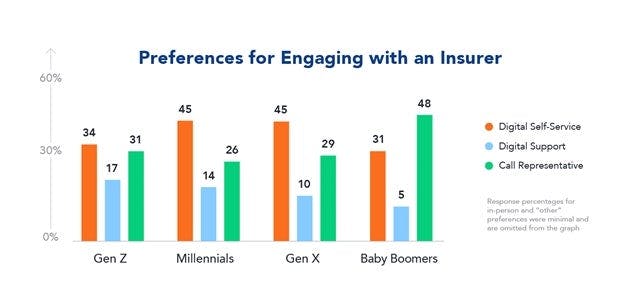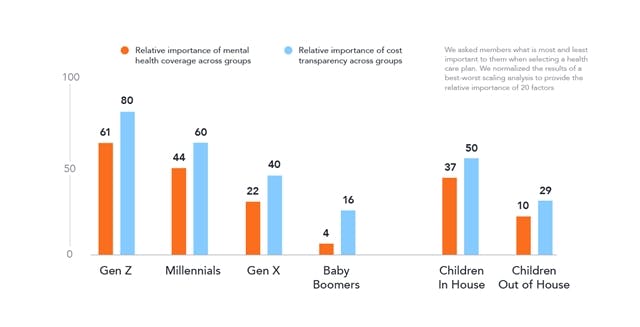Health Insurance Customer Experience: A Generational Breakdown


U.S. health insurance companies have had a tough few years. The pandemic brought new challenges, and forced companies to quickly activate new services and messaging around prevention, testing, and treatment for COVID-19. Meanwhile, all the companies that have struggled to meet premiums or even gone out of business have brought new financial pressures to an already-stressed industry.
How can health insurers make the most of customer experience data to identify and prioritize the changes that will have the biggest impact on ROI?
When we did our latest Verint Experience Index (VXI) report on health insurance providers, we thought it might be useful to look at different customer segments to understand how needs and expectations differ from group to group. Understanding these generational differences may shed light on how to prioritize health insurance customer experience improvements.
Health Insurance Customer Experience: Different Generations Have Different Priorities
Here’s a rundown of the generations we surveyed for this study and some of the top findings:
Generation Z
- Born between 1997-2003
- 11% of our survey respondents
- This group is the most likely to care about cost transparency.
- They are more likely to prioritize mental health coverage than other generations.
- They are the least likely to trust their health insurer.
- To improve satisfaction for this group, the top priority should be to focus on enrollment as well as value.
Millennials
- Born between 1981-1996
- 36% of our survey respondents
- Millennials are the most likely to prefer using the app or mobile site to engage with their insurer, instead of traditional web or phone channels.
Generation X
- Born between 1965-1980
- 20% of our survey respondents
- They prefer digital self-service to digital support and phone channels.
- This group is most likely to mention “coverage” when asked what they like best about their insurer.
Baby Boomers
- Born between 1946-1964
- 28% of our respondents
- They are the most likely of any generation to trust their insurer.
- This generation is the least likely to trust the insurer’s app.

What Members Like Best About Their Health Insurer
Using an open-ended question, we asked members what they like best about their current health insurance company. There were a number of notable findings:
- Coverage was mentioned most often by women, Gen X, and Gen Z.
- Men and Millennials were more likely to mention service.
- Baby Boomers were more likely to mention ease of use, and Gen Z was less likely to.
- Gen Z and men were the groups most likely to mention costs.
Young People Care More About Mental Health Coverage and Cost Transparency
Our research showed that overall, mental health coverage was a relatively unimportant benefit (15.8 on a 100-point scale of relative importance).
However, when we look at a few specific member segments, we see that mental health benefits are incredibly important to Generation Z, Millennials, and people with children in the household.
Similarly, cost transparency matters more to Generation Z than it does to other segments. Cost transparency also impacts trust, communication, and financial considerations in a way some other features don’t.
In fact, while the average importance of cost transparency across all respondents is 37.2, Generation Z values it (79.2) almost as much as they value benefits (100).

Health Insurance Customer Experience by Generation: Takeaways
Health insurance customers are not a monolith. It makes sense that older people, who statistically have more health concerns, would have different needs than younger people.
Busy executives can use generational insights to make targeted changes. For example:
- Digital user-interface updates and improvements to call center procedures can be targeted for relevant demographics, as can channel-specific marketing campaigns.
- Insurers should be clear about mental health coverage and could consider targeting relevant marketing and educational materials to groups who are most likely to want it.
- There are a number of ways to increase cost transparency and target it to the most interested demographics, including visible and easy-to-use tools and calculators that estimate total and out-of-pocket costs. Communication about cost transparency should start at the very beginning of a customer journey with onboarding and continue throughout the lifecycle as healthcare systems and plan benefits change.
Remember that customer experience surveys alone are not enough. Critical insights exist in unstructured data such as comments, web chats, emails, social media, and call notes that can drive enhanced insight and identify pain points early. Connecting the data through the right framework is key.